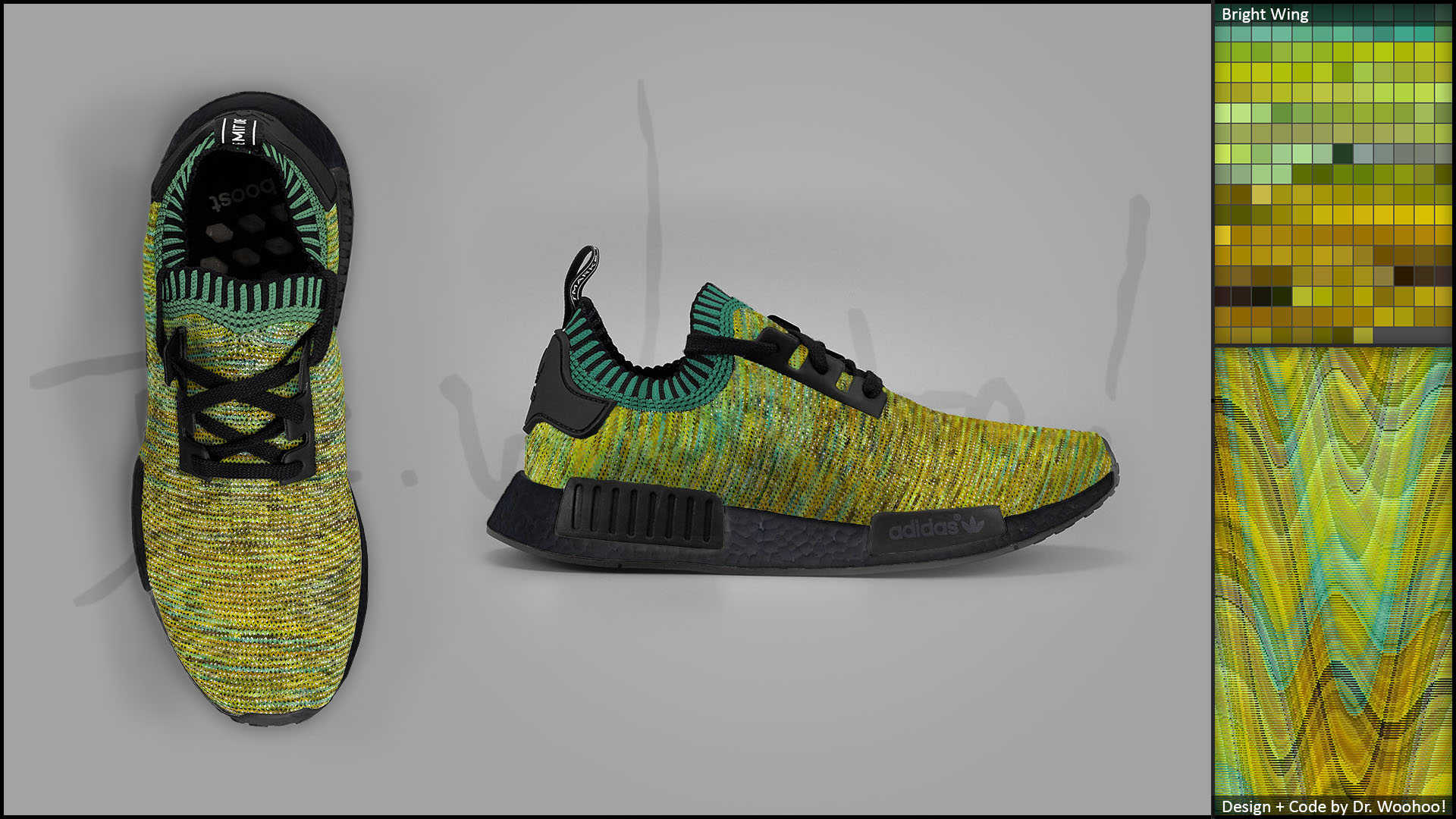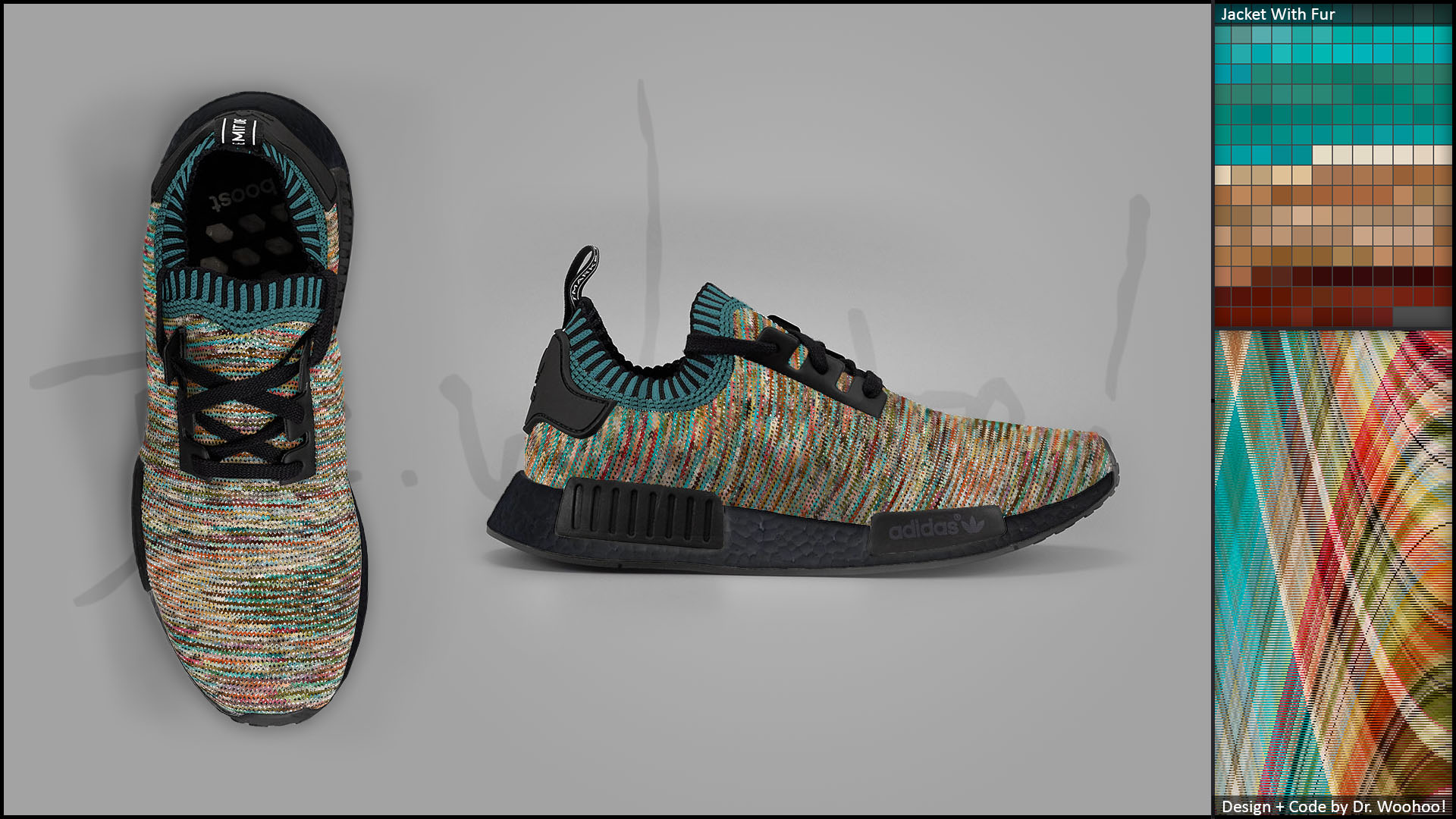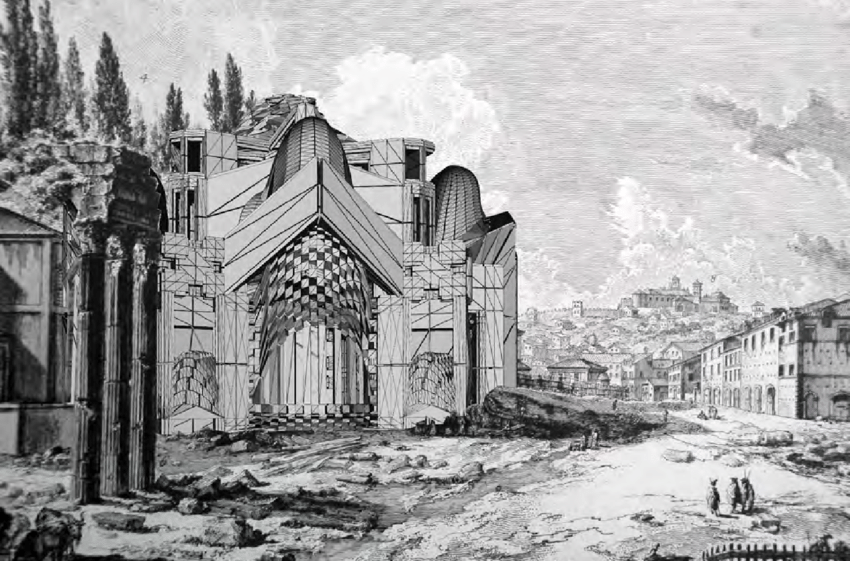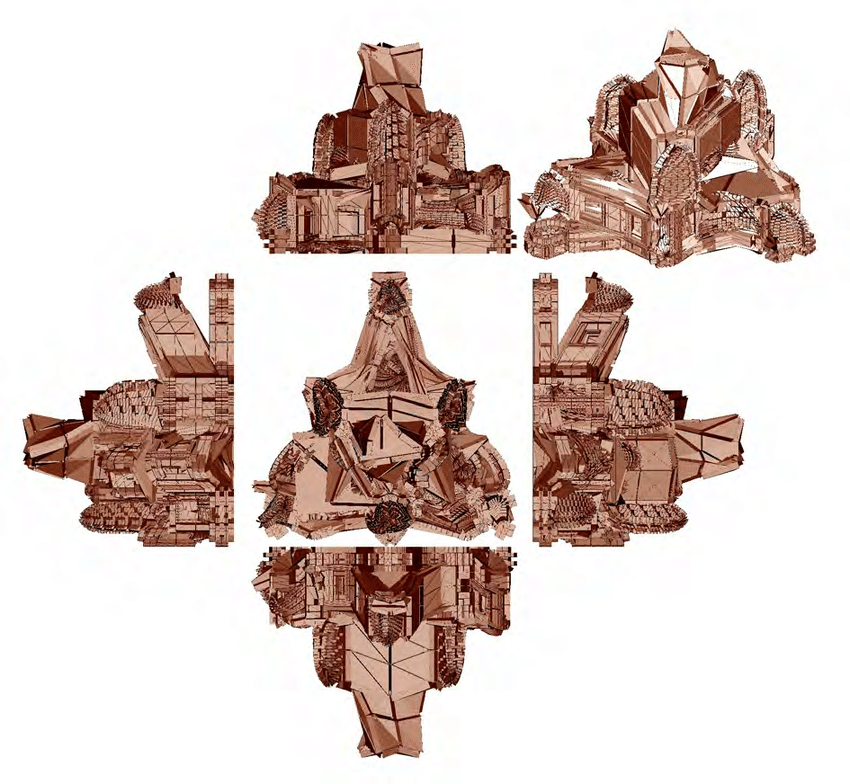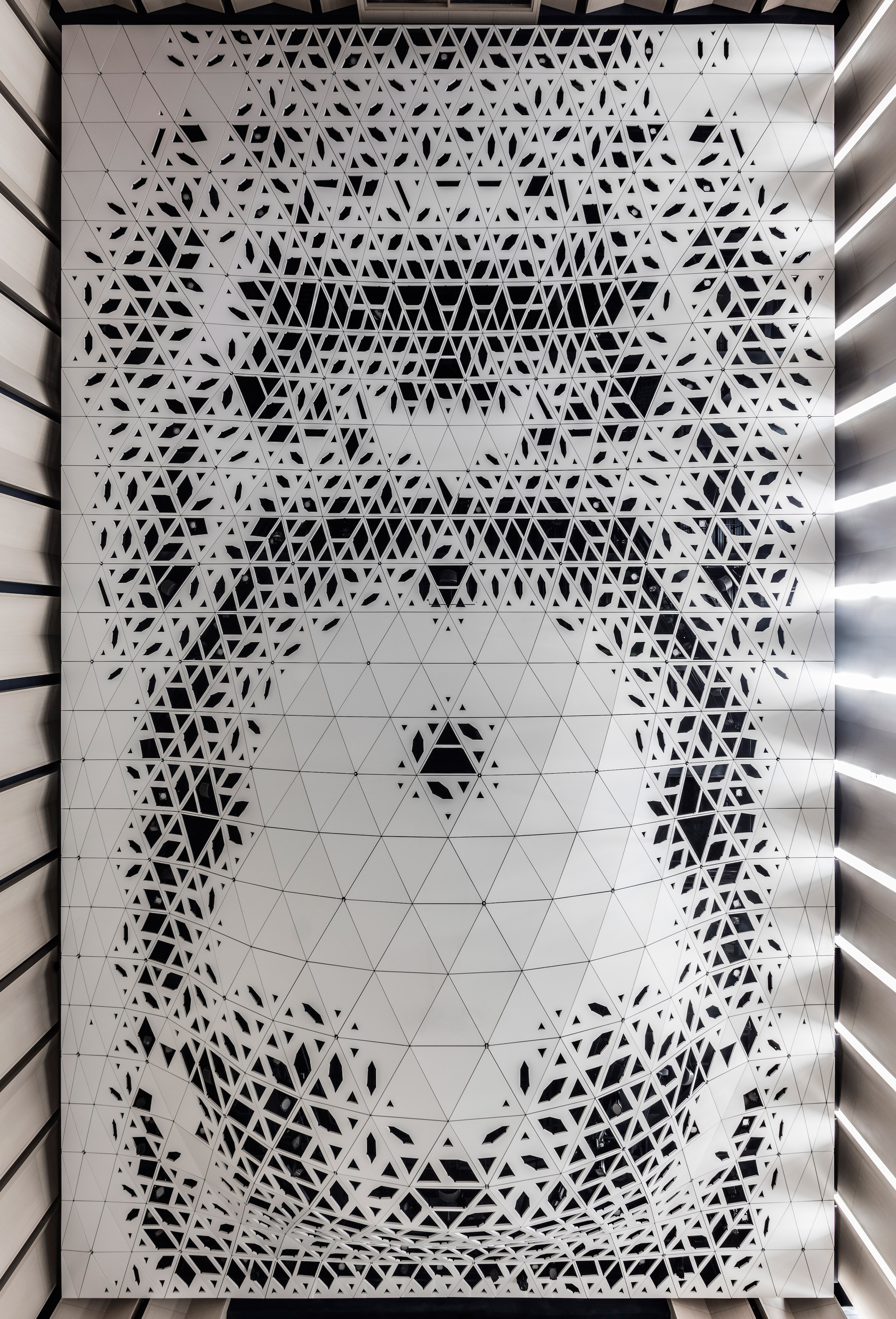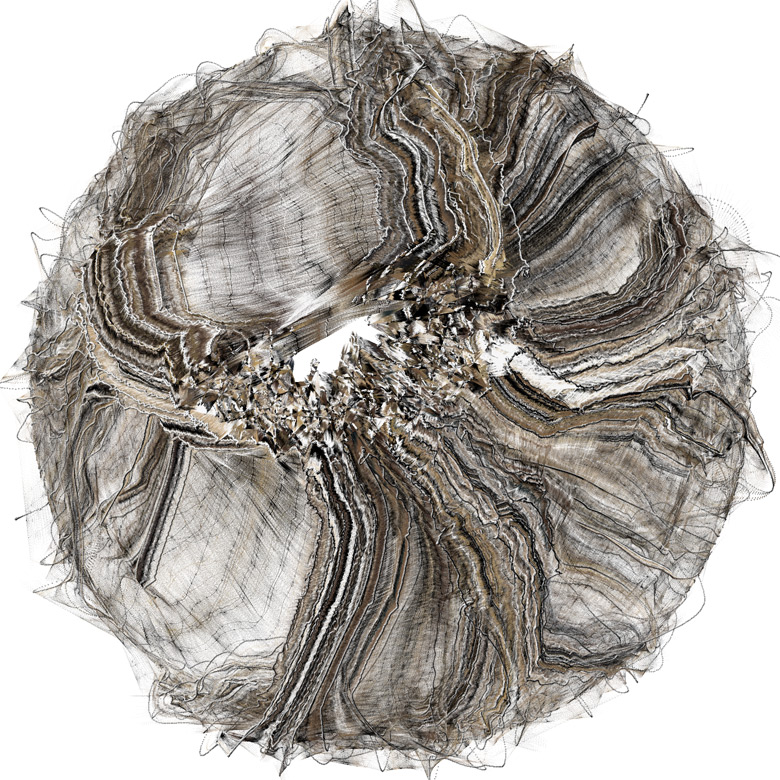Generative Knitting Design Tools by Dr. Woohoo (2016)
Dr. Woohoo created a generative work where it captured color palettes and turned them into patterns and applied it to a knitted design, such as sneakers. I enjoy the fun color palettes that are created and the patterns the come about from those colors. The patterns are typically wavy lines intersecting to create an interesting visual. I think it is really cool how the pattern that is created gets interpreted another way when it is knitted into a shoe. You can see the colors are the same, but the knitted pattern is not clearly the same as the generative pattern. The color palettes are captured through colors in the world, and then an algorithm is used to generate a pattern from those colors to knit onto a design. I think Dr. Woohoo’s artistic sensibilities comes from knowing how to create interesting color palettes and know when he has an eye-catching pattern.
![[OLD FALL 2019] 15-104 • Introduction to Computing for Creative Practice](../../../../wp-content/uploads/2020/08/stop-banner.png)
